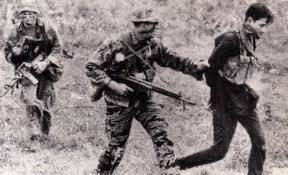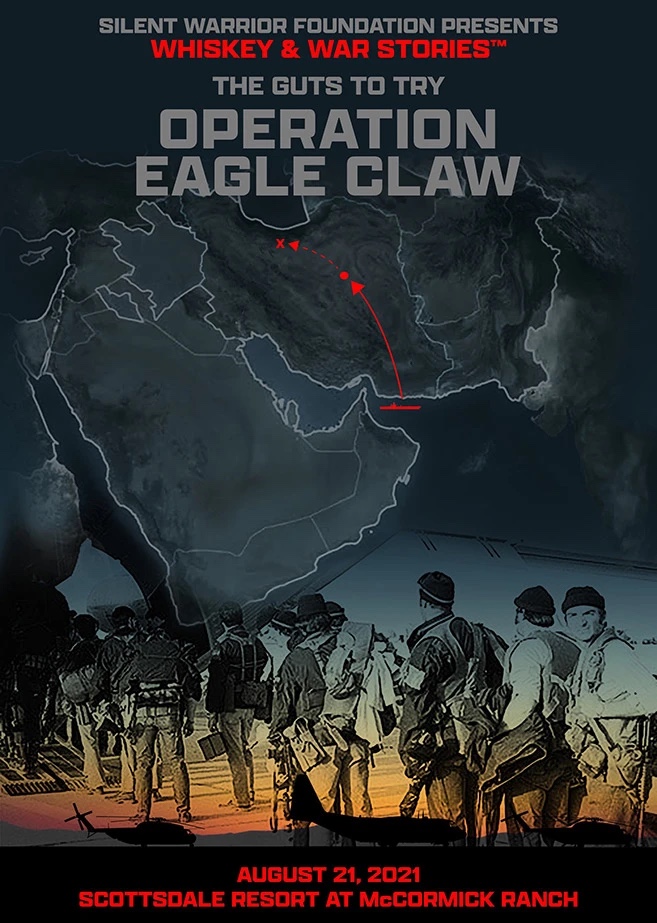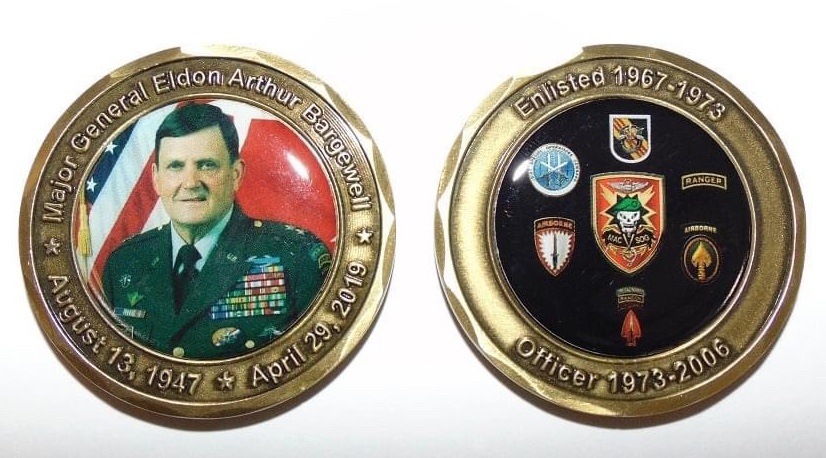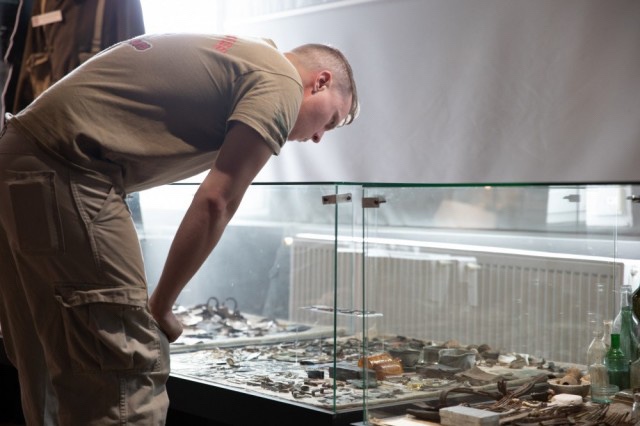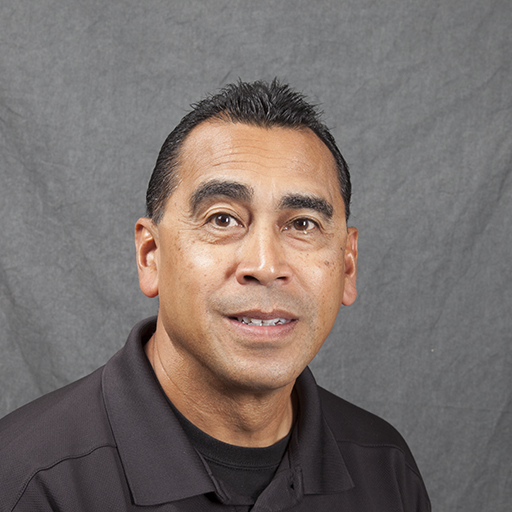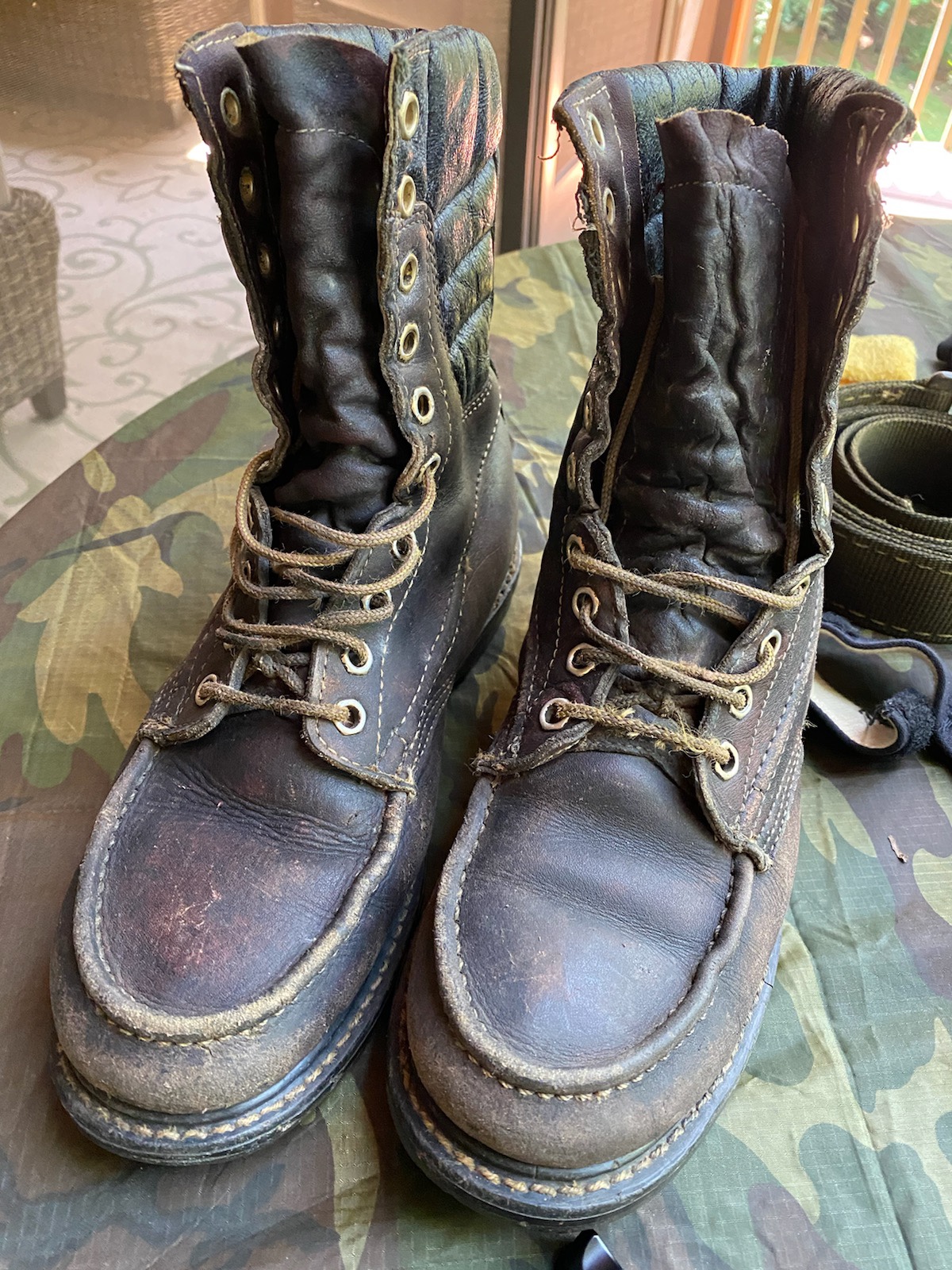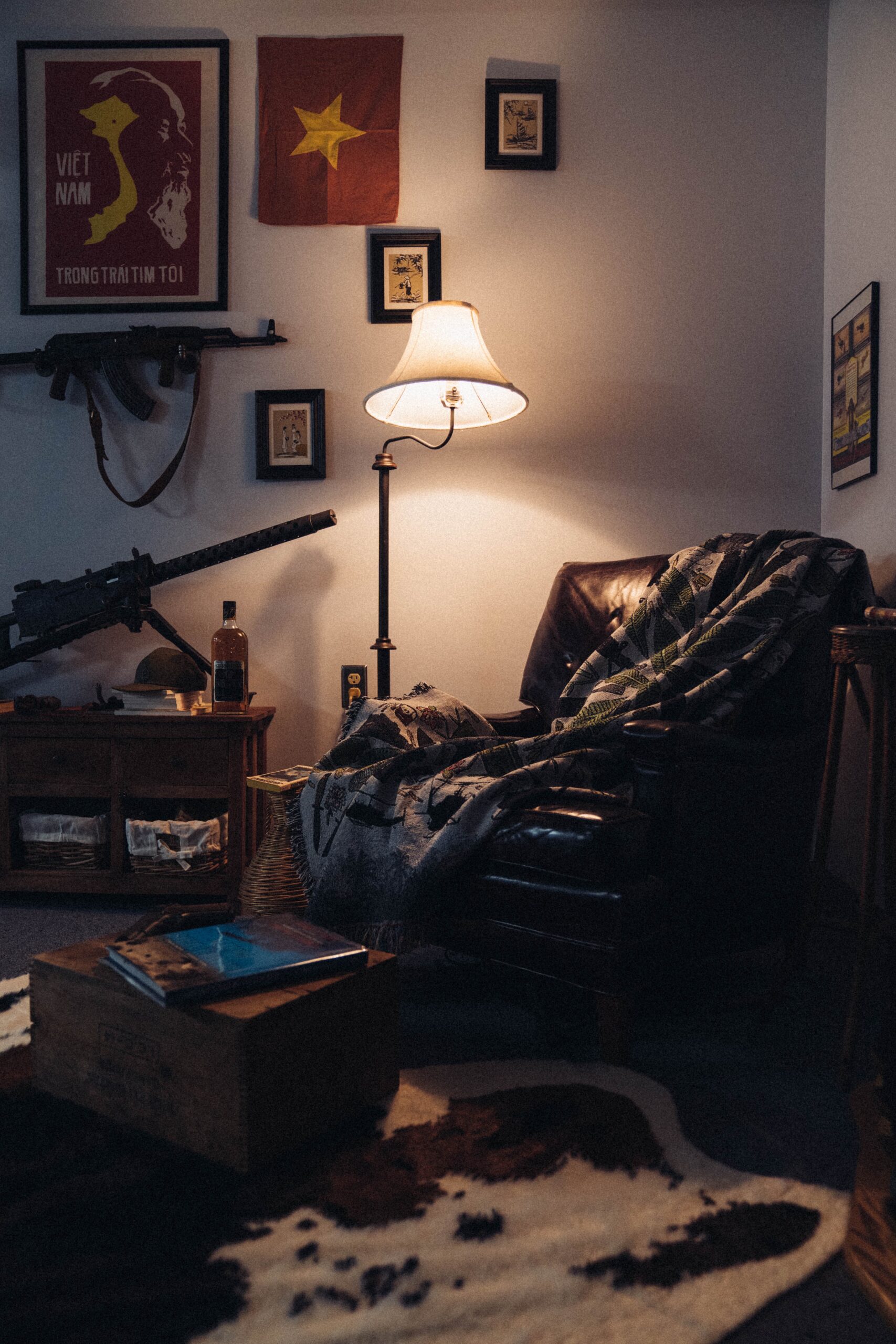
IRON MOUNTAIN, Mich. – (July 30, 2021) Kitfox Design Group is proud to launch their latest and most exciting product yet, The Vietnam Throw blanket. A concerted effort to recognize our military’s history, and a humble nod and a thank you to the servicemen and women who fought in Vietnam.
The Vietnam Throw is woven in a small family-owned mill located in the foothills of the Blue Ridge Mountains. The throw features a Colt XM177E1, Huey helicopters, and a selection of other items and foliage reminiscent of the Vietnam War. The throw blankets are made on European Jacquard looms with roughly eight miles of American made, 100% cotton yarn.
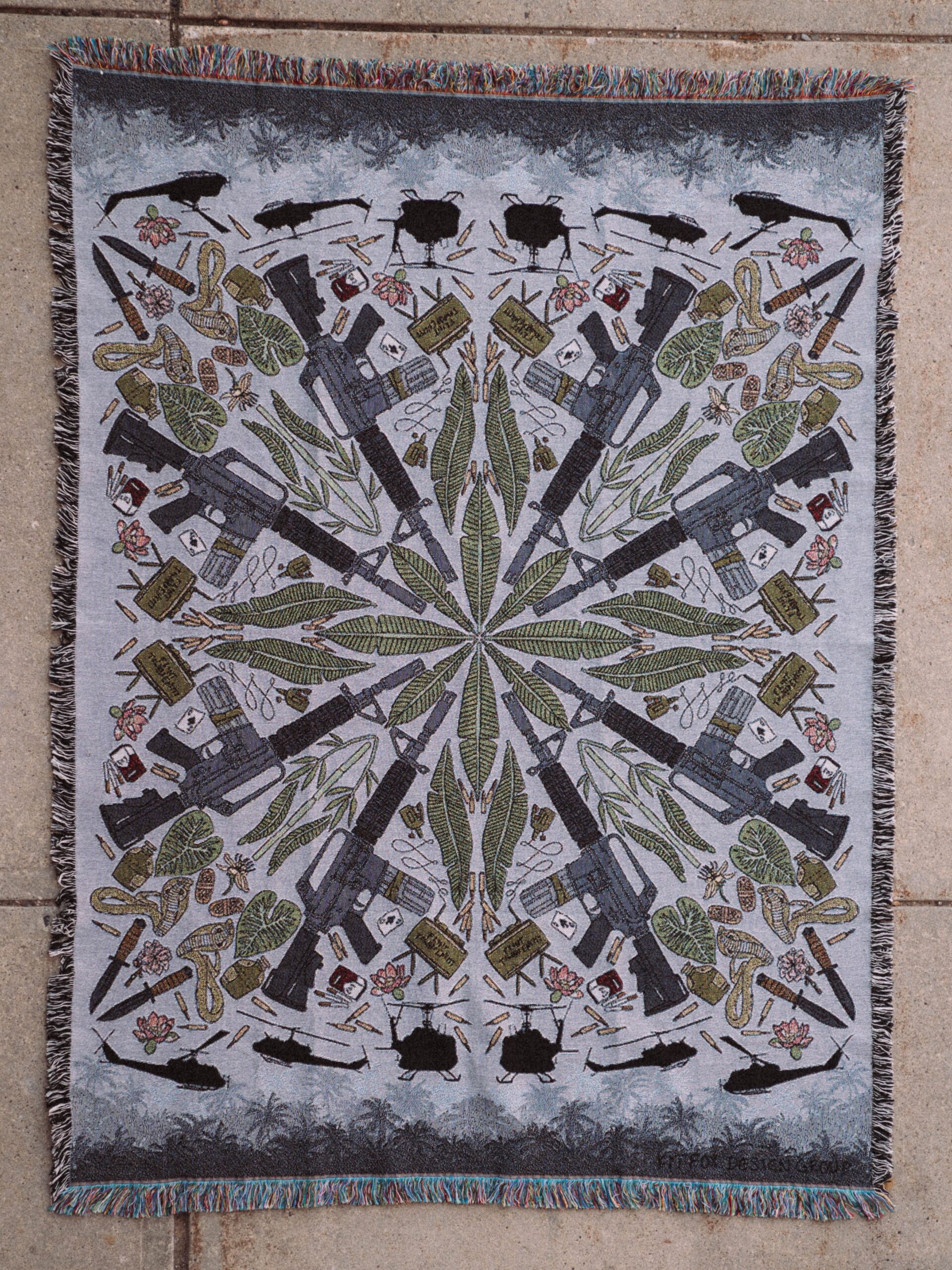
“I had a very rough draft of the pattern tucked away for a few years. My grandfather is a Vietnam Veteran, and because of him, the Vietnam War has always intrigued me, but especially so with his silence on the matter,” said Sara Westman, the owner and illustrator at Kitfox Design Group. “But I never could figure out what to do with the artwork. The idea finally came to me on a beach in Pensacola when I couldn’t stop thinking about how inconveniently small my beach towel was. I thought to myself that I’d rather be laying out on a blanket – and here we are. I am hoping that both military history fans and Vietnam Veterans enjoy this project as much as I have enjoyed learning about the Vietnam War and creating the art.”
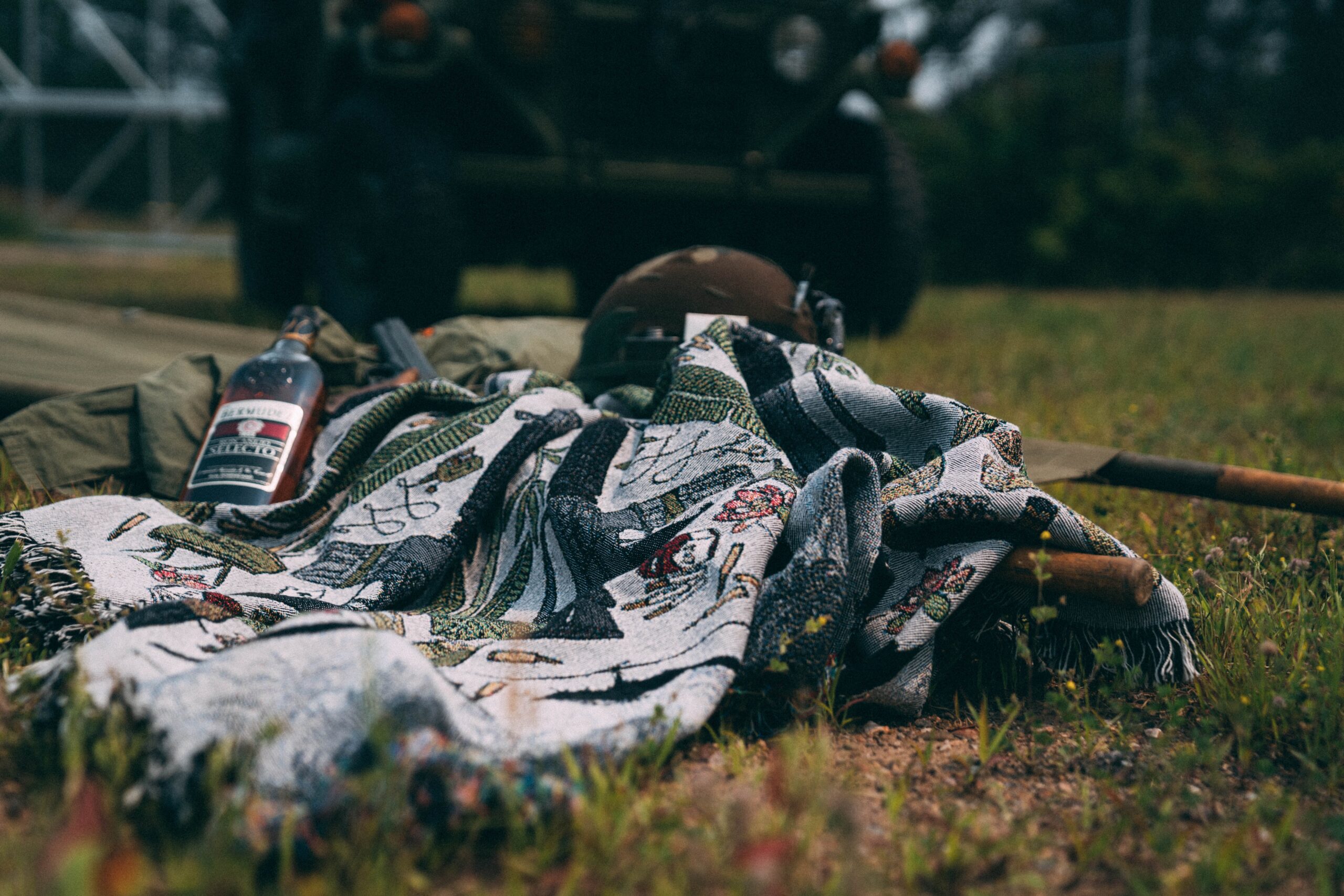
Pre-orders open July 30th at 9am Central and will close at 11:59pm Central on August 9th. The orders will begin shipping roughly 4-6 weeks after pre-orders close.
The throw will retail at $125 + shipping, and will ship worldwide. All orders placed on July 30th will receive an early bird gift. In addition to the throw blanket, Kitfox will also be launching a small collection of other items within the Vietnam War theme.
“Items in the collection will include the enamel pins and stickers that our fans are used to seeing from us, but we are also pretty excited about some custom apparel and lifestyle items that we have been working on.”
The throw blanket and other items in The Vietnam Collection are available for purchase on the Kitfox website.
Kitfox Design Group is a marketing and illustration company located in the beautiful Upper Peninsula of Michigan. Kitfox Design Group specializes in marketing goods for the firearm, automotive, and aerospace industries. Pre-order The Vietnam Throw on their website at www.kitfoxdesigngroup.com


